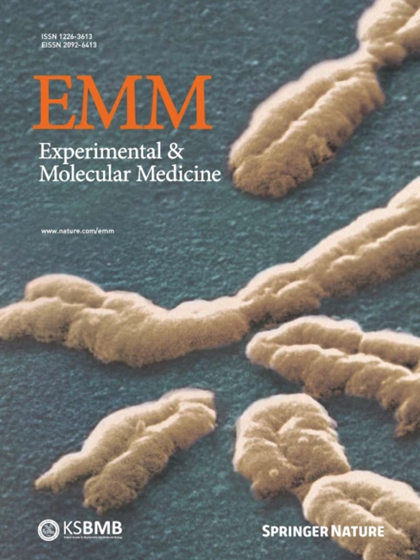调节神经可塑性以缓解慢性疼痛:非侵入性神经调控是一种前景广阔的方法。
IF 9.5
2区 医学
Q1 BIOCHEMISTRY & MOLECULAR BIOLOGY
引用次数: 0
摘要
慢性神经性疼痛是一种使人衰弱的神经可塑性疾病,严重影响了全世界数百万人的生活质量。这种复杂的疾病,包括多种表现,如坐骨神经痛、糖尿病性神经病变和带状疱疹后神经痛,是由神经损伤或疼痛处理通路功能障碍引起的,涉及多种生物、生理和心理过程。适应性不良的神经可塑性,被称为中枢敏化,在慢性神经性疼痛的持续中起着关键作用。目前对神经性疼痛的治疗包括药理学干预(如抗抑郁药和抗惊厥药)、侵入性手术(如深部脑刺激)和物理治疗。然而,这些方法通常有局限性和潜在的副作用。鉴于这些挑战,对非侵入性神经调节技术作为神经性疼痛的替代或补充治疗的兴趣正在增加。这些方法旨在诱导镇痛,同时逆转不适应的可塑性变化,比传统的药理学实践和侵入性方法提供潜在的优势。近年来的技术进步促进了非侵入性神经调节疗法的探索,如重复经颅磁刺激、经颅直流刺激和经颅超声刺激,以及在临床前和临床水平上将侵入性技术创新地转化为非侵入性方法。本文旨在批判性地研究慢性神经性疼痛中神经可塑性不良的机制,并评估无创神经调节技术在缓解疼痛方面的疗效。通过专注于优化这些技术,我们可以更好地评估它们的短期和长期效果,完善治疗变量,最终提高神经性疼痛管理的质量。本文章由计算机程序翻译,如有差异,请以英文原文为准。

Modulating neuroplasticity for chronic pain relief: noninvasive neuromodulation as a promising approach
Chronic neuropathic pain is a debilitating neuroplastic disorder that notably impacts the quality of life of millions of people worldwide. This complex condition, encompassing various manifestations, such as sciatica, diabetic neuropathy and postherpetic neuralgia, arises from nerve damage or malfunctions in pain processing pathways and involves various biological, physiological and psychological processes. Maladaptive neuroplasticity, known as central sensitization, plays a critical role in the persistence of chronic neuropathic pain. Current treatments for neuropathic pain include pharmacological interventions (for example, antidepressants and anticonvulsants), invasive procedures (for example, deep brain stimulation) and physical therapies. However, these approaches often have limitations and potential side effects. In light of these challenges, interest in noninvasive neuromodulation techniques as alternatives or complementary treatments for neuropathic pain is increasing. These methods aim to induce analgesia while reversing maladaptive plastic changes, offering potential advantages over conventional pharmacological practices and invasive methods. Recent technological advancements have spurred the exploration of noninvasive neuromodulation therapies, such as repetitive transcranial magnetic stimulation, transcranial direct current stimulation and transcranial ultrasound stimulation, as well as innovative transformations of invasive techniques into noninvasive methods at both the preclinical and clinical levels. Here this review aims to critically examine the mechanisms of maladaptive neuroplasticity in chronic neuropathic pain and evaluate the efficacy of noninvasive neuromodulation techniques in pain relief. By focusing on optimizing these techniques, we can better assess their short-term and long-term effects, refine treatment variables and ultimately improve the quality of neuropathic pain management. Chronic neuropathic pain is a serious health issue affecting many people worldwide. It results from nerve damage and involves complex changes in the nervous system, making it difficult to treat. Researchers are exploring new ways to manage this pain by focusing on neuroplasticity. This study reviews noninvasive techniques that aim to modulate neuroplasticity to alleviate chronic pain. The authors examined various noninvasive methods, such as transcranial magnetic stimulation, transcranial direct current stimulation and ultrasound, which target specific brain areas involved in pain processing. These techniques can alter neural activity without surgery, offering a safer alternative to traditional treatments. The findings suggest that these methods can reduce pain by influencing neural circuits and promoting beneficial changes in the brain. However, the effects are often temporary, highlighting the need for further research to develop long-lasting solutions. This summary was initially drafted using artificial intelligence, then revised and fact-checked by the author.
求助全文
通过发布文献求助,成功后即可免费获取论文全文。
去求助
来源期刊

Experimental and Molecular Medicine
医学-生化与分子生物学
CiteScore
19.50
自引率
0.80%
发文量
166
审稿时长
3 months
期刊介绍:
Experimental & Molecular Medicine (EMM) stands as Korea's pioneering biochemistry journal, established in 1964 and rejuvenated in 1996 as an Open Access, fully peer-reviewed international journal. Dedicated to advancing translational research and showcasing recent breakthroughs in the biomedical realm, EMM invites submissions encompassing genetic, molecular, and cellular studies of human physiology and diseases. Emphasizing the correlation between experimental and translational research and enhanced clinical benefits, the journal actively encourages contributions employing specific molecular tools. Welcoming studies that bridge basic discoveries with clinical relevance, alongside articles demonstrating clear in vivo significance and novelty, Experimental & Molecular Medicine proudly serves as an open-access, online-only repository of cutting-edge medical research.
 求助内容:
求助内容: 应助结果提醒方式:
应助结果提醒方式:


